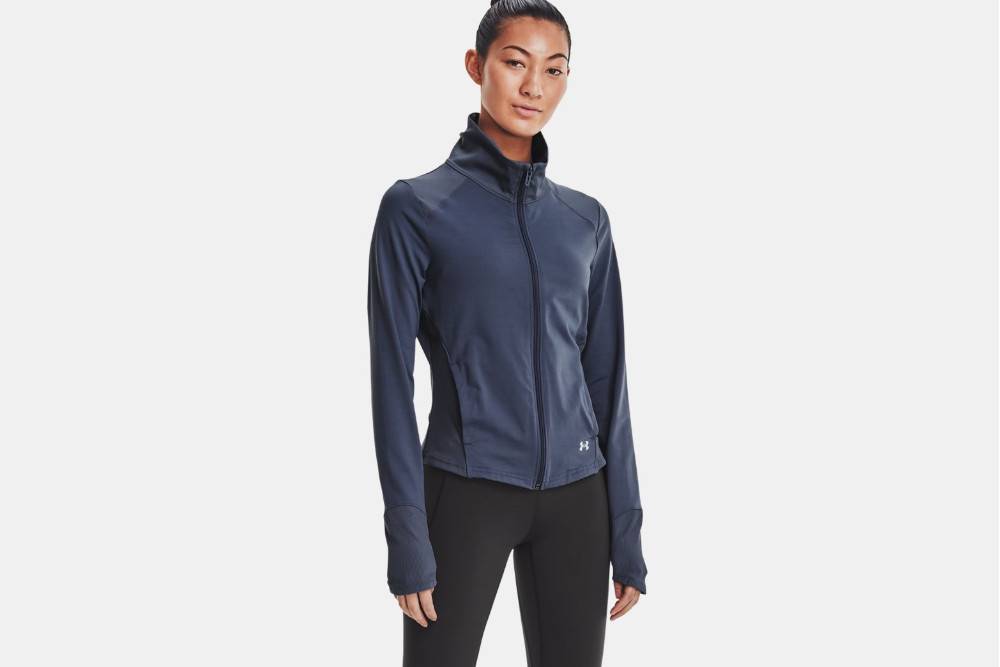
Under Armour is an American fashion retailer founded in 1996 by Kevin Plank and headquartered in Baltimore, Maryland. The multinational clothing-retail company creates activewear for men, women, and children.
Under Armour makes clothing, accessories, shoes, underwear, eyewear, and equipment. It has more than 17,000 employees in stores, factories, and logistics.
Under Armour strives to work sustainably, ethically, and efficiently to perfect performance while reusing the Earth's resources. It aims to develop lasting solutions to protect our planet.
Panaprium is independent and reader supported. If you buy something through our link, we may earn a commission. If you can, please support us on a monthly basis. It takes less than a minute to set up, and you will be making a big impact every single month. Thank you!
Sustainability Rating: 2/10
Rating FAQ
Category: Clothing, accessories, shoes, bags
For: Women, men, children
Type: Basics, knitwear, activewear, underwear, loungewear, outerwear, sneakers, boots, sandals
Style: Casual
Quality: Low
Prices: $
Sizes: 2XS-3XL, 0-20 (US), 2-22 (UK), 32-58 (EU), 4-24 (AU), plus
Fabrics: Cotton, lyocell, modal, viscose, acetate, polyester, nylon, spandex, acrylic, neoprene, polyurethane, rubber, leather, wool, down
100% Organic: No
100% Vegan: No
Ethical & Fair: No
Recycling: Yes
Producing countries: not transparent enough
Certifications: no certification
Sustainability Practices
Under Armour doesn't use any organic materials such as organic cotton. It makes some products with recycled materials such as recycled polyester, and regenerated nylon.
Most of its fabrics are either natural without relevant certifications, such as regular cotton, or synthetic petroleum-based fibers such as polyester, nylon, acrylic, and more.
Under Armour also uses a small proportion of semi-synthetic fibers or regenerated cellulosic fabrics such as Tencel lyocell, modal, acetate, and viscose.
Tencel is an eco-friendly fiber made with wood pulp from certified sustainable forests. But only a tiny proportion of the materials used by Under Armour are environmentally friendly and sustainable.
Under Armour doesn't publish a list of all its manufacturers and processing facilities on its corporate website. It doesn't disclose how it chooses its network of suppliers.
The 2022 Fashion Transparency Index gave Under Armour a score of only 22% based on how much the group discloses about its social and environmental policies, practices, and impacts.
The American clothing retailer doesn't show any labor certification standard that would ensure good working conditions, decent living wages, health, safety, and other crucial rights for workers in its supply chain.
Under Armour has a code of conduct that applies to all its suppliers and subcontractors. It seeks to do business with suppliers and subcontractors that comply with the laws.
Under Armour assesses compliance with its Code of Conduct by informal visits or third-party audits with or without notice. The Fair Labor Association also conducts assessments of some of its factories, about 5% of applicable suppliers each year.
Under Armour doesn't use exotic animal skin, hair, fur, or angora. But it uses leather, wool, and down feathers to manufacture many of its clothing pieces.
These animal-derived materials are cruel and unethical. They also harm the environment by producing greenhouse gases and waste. More sustainable alternatives exist.
Sustainability Goals
Under Armour has committed to less waste and more durability and circular systems by 2030. It works to transition from a linear manufacturing system to a circular manufacturing system.
Under Armour will implement a take-back pilot in one or more regions, expanding circularity solutions globally by 2025. 50% of its products will adhere to its sustainability and circular principles by 2024. It will also have a roadmap to ensure recyclability by 2030.
Under Armour aims to eliminate single-use plastic brand product packaging by 50% by 2023. And 35% of the polyester it uses in its garments will be recycled polyester by 2025.
Under Armour plans to reduce its GHG emissions by 30% in Scope 1 and 2 and 3 by 2030 to achieve net-zero emissions in 2050. It will increase renewable electricity in owned and operated facilities to 100% by 2030.
100% of its cotton will come from low-impact sources by 2025. It plans to reduce the environmental impact of its materials (measured by MSI score) by 50% by 2030.
Under Armour will also scale innovative water-saving materials and technologies to at least 25% of its purchased materials and achieve 20% water savings at strategic mills and Tier 1 suppliers with wet processes by 2025.
Buy Here
Discover Under Armour's sustainable collections at UnderArmour.com.
Reviews And Experiences With Under Armour
Have you had (good) experiences with shopping at or the products of Under Armour? Then leave us your rating below.
What We're Up Against
Multinational corporations overproducing cheap products in the poorest countries.
Huge factories with sweatshop-like conditions underpaying workers.
Media conglomerates promoting unethical, unsustainable products.
Bad actors encouraging overconsumption through oblivious behavior.
- - - -
Thankfully, we've got our supporters, including you.
Panaprium is funded by readers like you who want to join us in our mission to make the world entirely sustainable.
If you can, please support us on a monthly basis. It takes less than a minute to set up, and you will be making a big impact every single month. Thank you.






























0 comments